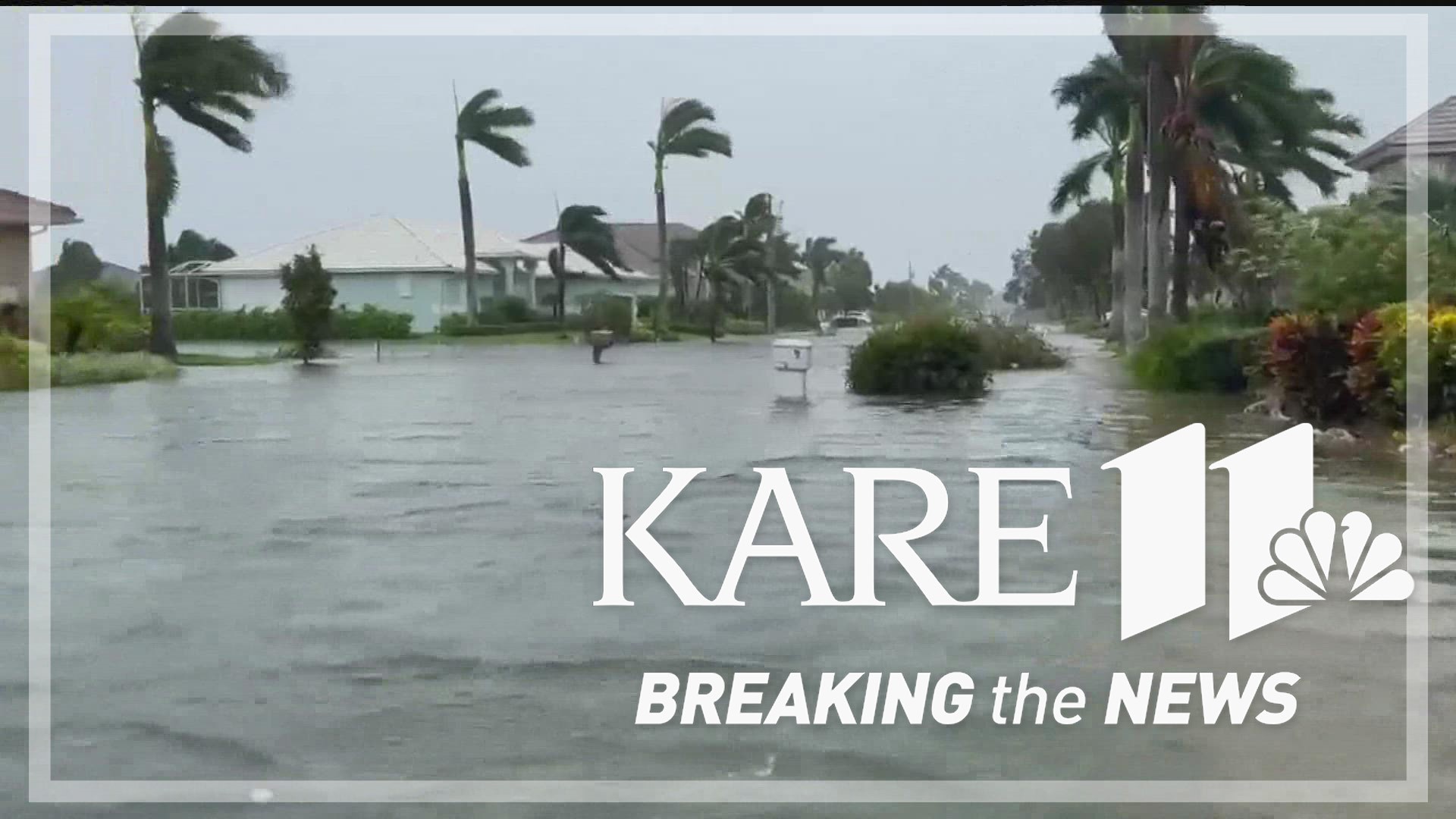Report on Public Perception of Extreme Weather and Support for Sustainable Development Goals
Introduction
A global research initiative has established a significant correlation between public attribution of extreme weather events to climate change and increased support for climate-related policies. This report analyzes these findings, framing them within the context of the United Nations Sustainable Development Goals (SDGs), with a primary focus on SDG 13 (Climate Action). The data reveals that while personal experience with disasters is a factor, the cognitive link to climate change is the more critical driver for public backing of mitigation and adaptation strategies.
The Link Between Climate Change Attribution and Support for SDG 13
The Critical Role of Perception in Driving Climate Action
The study’s central finding indicates that public support for policies aligned with SDG 13 (Climate Action) is substantially higher when individuals believe that local natural disasters are intensified by climate change. This psychological attribution appears to be a more potent factor than the frequency or direct experience of such events alone.
- Support for climate policies is elevated when citizens attribute extreme weather to climate change.
- This connection underscores the importance of public awareness campaigns for achieving the targets of SDG 13.
- The research acknowledges the possibility of reverse causality, where individuals with pre-existing environmental concerns are more likely to attribute disasters to climate change.
Analysis of Public Support for Specific SDG-Aligned Policies
Public support varies considerably across different types of government interventions, revealing clear preferences for policies related to ecosystem protection and clean energy over fiscal measures.
High Support for Policies Targeting SDG 15 and SDG 7
- SDG 15 (Life on Land): Protecting forested and natural land areas received the highest level of public endorsement, with 82% of respondents indicating strong support.
- SDG 7 (Affordable and Clean Energy): The wider deployment of renewable energy was the second most popular policy, with strong approval from 75% of respondents.
- SDG 11 (Sustainable Cities and Communities): Support for expanding public transport infrastructure was also noted as a preferred measure.
Challenges in Gaining Support for Carbon-Based Fiscal Policies
Policies involving direct taxation faced significant public resistance, posing a challenge for implementing market-based mechanisms for SDG 12 (Responsible Consumption and Production) and SDG 13.
- Taxes on carbon-intensive foods received very low support, at only 22%.
- Increased levies on fossil fuels were also unpopular, with only 29% of people indicating strong support.
Geographic, Demographic, and Hazard-Specific Factors
Regional and Demographic Variations in Policy Support
The study identified distinct patterns in policy support based on geography and demographics, highlighting the need for tailored approaches to advance the SDGs.
- Geographic Disparities: Support was highest in Africa and Asia, while some parts of Europe (Czechia, Finland, Norway) showed below-average support. Attribution of disasters to climate change was particularly high in South America.
- Demographic Profile: Greater support for climate policies was observed among participants who were male, younger, more religious, had higher education and income, held left-leaning political views, and lived in urban areas.
The Influence of Hazard Type on Public Opinion
Certain types of extreme weather events appear to be more effective at shifting public opinion, likely due to their perceived manageability through concrete policy actions.
- Heatwaves and tropical cyclones were found to have a greater impact on public attitudes.
- The researchers suggest this is because citizens can more easily associate these events with tangible engineering and policy solutions, such as:
- Flood protections and seawalls, contributing to SDG 11 (Sustainable Cities and Communities).
- Irrigation systems to combat heat and drought, relevant to SDG 6 (Clean Water and Sanitation) and SDG 2 (Zero Hunger).
- Land-use policies and prescribed burn-offs to manage fire risk, aligning with SDG 15 (Life on Land).
Strategic Recommendations for Policy and Communication
Enhancing Communication to Advance the Global Goals
The findings strongly suggest that effective communication is essential for building the public consensus needed to implement comprehensive climate strategies. To accelerate progress on the SDGs, the following actions are recommended:
- Develop targeted communication campaigns that explicitly connect local extreme weather events with the broader trend of global climate change, thereby strengthening support for SDG 13.
- Frame climate policies by emphasizing their co-benefits, such as the health improvements (SDG 3) from clean energy (SDG 7) or the biodiversity gains (SDG 15) from forest protection.
- Address public resistance to carbon pricing by clearly articulating the purpose of such measures and highlighting how they contribute to a sustainable and equitable transition.
Conclusion: Policy Design for a Climate-Aware Public
Ultimately, the research demonstrates that raw exposure to a disaster does not automatically create a mandate for climate action. The public’s willingness to support and invest in mitigation and adaptation measures hinges on their understanding of the causal link between these events and a warming planet. Policymakers must therefore integrate this principle into their post-disaster planning and long-term climate strategies, ensuring that policy design is informed by both the lived experiences and the climate literacy of their constituents to successfully achieve the Sustainable Development Goals.
Analysis of Sustainable Development Goals in the Article
1. Which SDGs are addressed or connected to the issues highlighted in the article?
-
SDG 13: Climate Action
This is the central theme of the article. The entire text revolves around public support for climate policies, the connection between extreme weather events (heatwaves, cyclones, floods) and climate change, and strategies for climate mitigation and adaptation, such as carbon taxes and renewable energy deployment.
-
SDG 7: Affordable and Clean Energy
The article explicitly mentions “wider deployment of renewable energy” as a key government policy measure that was gauged for public support. It notes that renewables ranked second in popularity, with strong approval from respondents.
-
SDG 15: Life on Land
The article highlights that “stronger protection of forests and other natural land” was the most popular policy option among those surveyed, with 82% of people expressing strong support. This directly relates to the goal of protecting and restoring terrestrial ecosystems.
-
SDG 11: Sustainable Cities and Communities
The article discusses policies relevant to this goal, including the expansion of “public transport infrastructure” and the implementation of engineering solutions like “flood protections” and “seawalls” to manage climate-related hazards, which are crucial for creating resilient and sustainable communities.
2. What specific targets under those SDGs can be identified based on the article’s content?
-
SDG 13: Climate Action
- Target 13.1: Strengthen resilience and adaptive capacity to climate-related hazards and natural disasters in all countries. The article directly addresses this by discussing public perception and policy support in the wake of disasters like storms, floods, heatwaves, and cyclones.
- Target 13.2: Integrate climate change measures into national policies, strategies and planning. The study’s focus is on gauging public support for a “suite of government policy measures,” including carbon taxes, renewable energy deployment, and forest protection, which are all examples of integrating climate action into national plans.
- Target 13.3: Improve education, awareness-raising and human and institutional capacity on climate change mitigation, adaptation, impact reduction and early warning. The article’s main finding—that attributing extreme weather to climate change increases policy support—underscores the critical role of awareness and perception. It suggests that “effective climate messaging should draw explicit connections between local disasters and broader warming trends.”
-
SDG 7: Affordable and Clean Energy
- Target 7.2: By 2030, increase substantially the share of renewable energy in the global energy mix. The article identifies “wider deployment of renewable energy” as a specific policy measure that garnered strong public approval, directly aligning with this target.
-
SDG 15: Life on Land
- Target 15.2: By 2020, promote the implementation of sustainable management of all types of forests, halt deforestation, restore degraded forests and substantially increase afforestation and reforestation globally. The article’s finding that “protecting forested and land areas” is the most popular policy option directly supports the objective of this target.
-
SDG 11: Sustainable Cities and Communities
- Target 11.2: By 2030, provide access to safe, affordable, accessible and sustainable transport systems for all… The mention of “expanded public transport infrastructure” as a supported climate policy connects directly to this target.
- Target 11.5: By 2030, significantly reduce the number of deaths and the number of people affected… by disasters… The article discusses managing hazards like heatwaves and cyclones through “flood protections, irrigation systems… and land-use policies,” which are measures aimed at reducing the impact of disasters on communities.
3. Are there any indicators mentioned or implied in the article that can be used to measure progress towards the identified targets?
-
For SDG 13 (Climate Action)
- Indicator for Target 13.3: The article’s study is fundamentally based on measuring public perception. The “extent to which respondents believe climate change has intensified local disasters” (the psychological weight of attribution) is a direct indicator of awareness.
- Indicator for Target 13.2: The level of public support for specific climate policies is used as a key metric. The article provides specific percentages: “22 percent… supported increased taxes on carbon-intensive foods,” “29 percent… on fossil fuels,” and “82 percent supported [protecting forested and land areas] very much.” These percentages serve as direct indicators of public acceptance of integrated climate policies.
-
For SDG 7 (Affordable and Clean Energy)
- Indicator for Target 7.2: The level of public support for renewable energy policies. The article states that “renewables ranked second, drawing strong approval from three in four respondents,” which translates to a 75% approval rate, serving as a clear indicator.
-
For SDG 15 (Life on Land)
- Indicator for Target 15.2: The level of public support for forest protection policies. The article provides a precise indicator by stating, “Eighty-two percent supported it very much and only three percent not supporting it at all.”
-
For SDG 11 (Sustainable Cities and Communities)
- Indicator for Target 11.5: The article implies an indicator by mentioning the use of “satellite-derived records of natural disasters including storms, floods, fires, and droughts” to estimate how many citizens had faced each hazard. This data on disaster exposure is a key indicator of community vulnerability.
- Indicator for Target 11.2: The level of public support for “expanded public transport infrastructure” is an implied indicator, although a specific percentage is not provided in the summary.
4. Table of SDGs, Targets, and Indicators
| SDGs | Targets | Indicators Identified in the Article |
|---|---|---|
| SDG 13: Climate Action | 13.1: Strengthen resilience and adaptive capacity to climate-related hazards. | Public support for policy interventions (e.g., flood protections, irrigation systems) following extreme weather events. |
| SDG 13: Climate Action | 13.2: Integrate climate change measures into national policies. | Percentage of public support for policies like carbon taxes (22% on food, 29% on fuel). |
| SDG 13: Climate Action | 13.3: Improve education, awareness-raising and human and institutional capacity. | The level of attribution, measured by “the extent to which respondents believe climate change has intensified local disasters.” |
| SDG 7: Affordable and Clean Energy | 7.2: Increase substantially the share of renewable energy. | Percentage of public support for “wider deployment of renewable energy” (75% or “three in four respondents”). |
| SDG 15: Life on Land | 15.2: Promote the implementation of sustainable management of all types of forests. | Percentage of public support for “protecting forested and land areas” (82%). |
| SDG 11: Sustainable Cities and Communities | 11.2: Provide access to sustainable transport systems. | Level of public support for “expanded public transport infrastructure.” |
| SDG 11: Sustainable Cities and Communities | 11.5: Significantly reduce the number of people affected by disasters. | Use of “satellite-derived records of natural disasters” to measure population exposure to hazards. |
Source: earth.com







